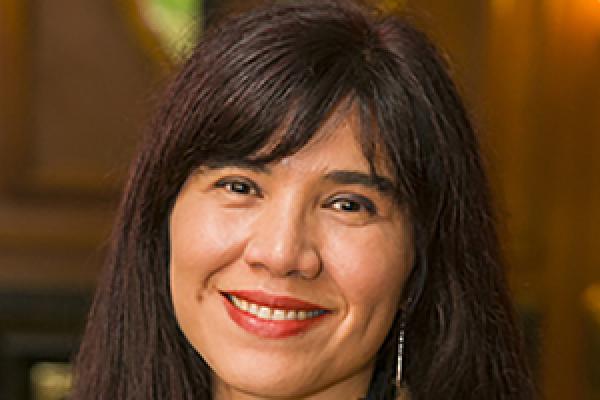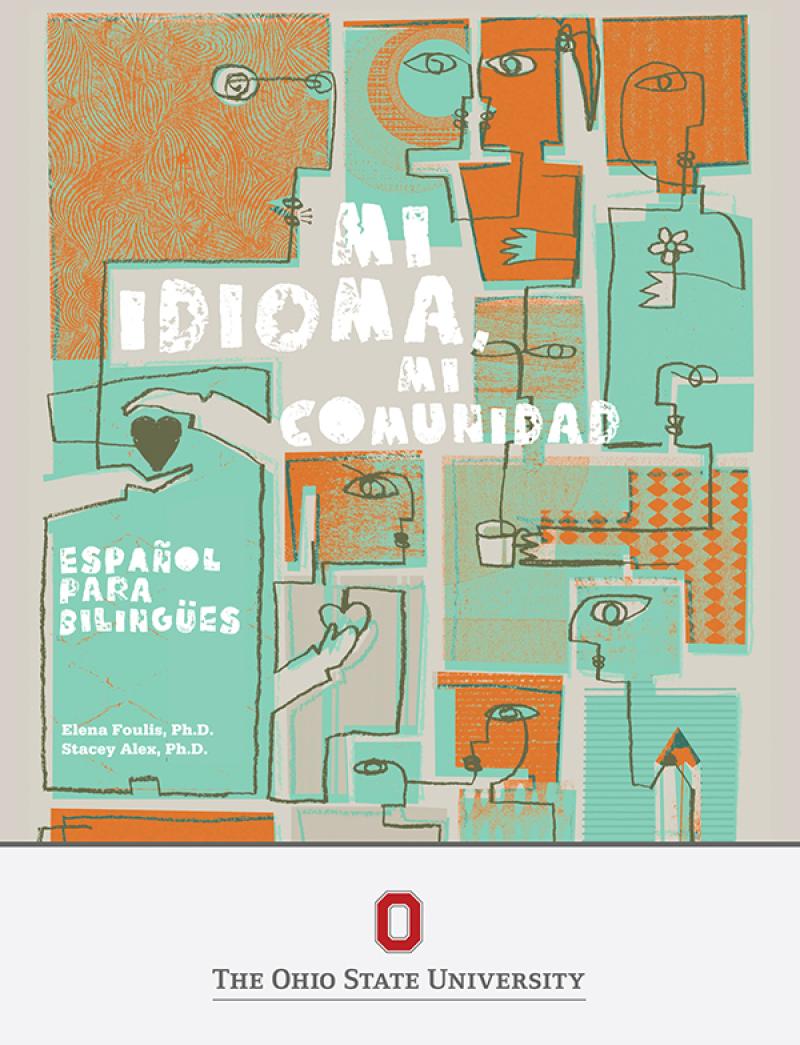Elena Foulis on heritage language learning

Elena Foulis, coordinator for service-learning and heritage language senior lecturer in the Department of Spanish and Portuguese, in partnership with Stacey Alex, the Center for Latin American Studies graduate teaching associate, recently published an open-access textbook for heritage language leaners of Spanish titled Mi idioma, mi comunidad: español para bilingües (which translates to "My language, my community: Spanish for bilinguals"). The book explores culturally relevant topics such as arts, festivals, food, ethnography, oral history and digital lives through multimedia such as podcasts, videos, neighborhood maps and music to teach heritage learners Spanish.
What inspired Mi idioma, mi comunidad: español para bilingües?
Over the past 5 years, we’ve seen an increase in the Latina/o/x student population. They come with different levels of bilingualism, and often the only option they had was to take a regular Spanish class with second-language learner pedagogy not suited for their language background. We now offer three levels of Spanish for heritage learners, but part of creating new classes is deciding the curriculum and textbooks for the class. After doing some research, again and again, I found a gap for teaching heritage language at the elementary level. I wanted a textbook that reflected the experiences of growing up in the Midwest, since most of our students come from Ohio, or states nearby.

Textbook cover for Mi idioma, mi comunidad: español para bilingües
What makes this textbook different than other textbooks for heritage language learners?
This textbook is the first open-access book created for heritage learners of Spanish and the first to be centered on the Midwest experience. So it really meets several of my personal commitments as (a) student-centered educator, (which are) to incorporate resources and curricula that center on students' experiences and cultural and linguistic ways of knowing and offer affordable options. This book is free!
Why do heritage language learners benefit from having a textbook tailored to their unique experiences?
Teaching Spanish for heritage learners is different because students are not learning the language as an additional language; they already know it. They might have different levels of fluidity in speech, writing, listening or reading, but they grew up with it. Also, because most of our students come from the Midwest, we wanted to create a type of awareness about the community around us, so we focused on that experience via family and local histories, community organizations and also official documents that have been less explored. For example, we are proud to include the work of Professor Isabel Velazquez and her team at the University of Nebraska, which is a collection of family letters from a Mexican-American family from the late 1800s. This, we believe, reclaims the histories of this community and builds a legacy for our students. It sends the message that the histories of Latinas/os starts also in the intimate spaces of home and community, and it engages on the national conversation of issues that affect us.
How do you tailor Spanish language learning to hearitage students in a Midwest context?
We wanted to center the readings, topics and activities in a Midwest context, using media, original works and articles with this in mind. For example, we highlight different Latina/o festivals in places like Ohio, Kansas, Nebraska, Kansas and Illinois. We talk about issues related to students in higher education, such as building community, joining Latinx student organizations and language use in the family and community. The textbook also provides insights into growing bilingual populations in the Midwest. Although we see this in the statistics, we don’t always find this part of history included in textbooks for heritage learners, perhaps because we still think of Latino/as as a still relatively new community in the Midwest. However, this is not the case, as the Mexican-American community has a long history of migration and settlement in places like northwest Ohio, Michigan and Indiana.
How does this book relate to your other research and work?
This book incorporates several of the projects I lead. It uses oral history, podcast, storytelling and digital humanities. In that sense, it was easy to incorporate these projects into the book and teach students the value of engaging in these different platforms and with a variety of tools.
What are your hopes for how students and teachers will utilize the resource you created?
My co-author, Stacey Alex, and I hope that instructors take advantage of this resource and adopt it in their classes. We often hear that instructors are looking for new and innovative resources to use in their classroom, and this books offers that. We do not claim that it will meet everyone’s needs, but instructors might choose to use only some of the chapters in this book that best fit their students' interests and needs. This semester, a colleague at Bradley University in Illinois is using it in her class. We are excited to see how the book works for her and her students. In fall of 2020, we hope to use this book here at Ohio State.
Read more about Elena's research and projects here, and download Mi idioma, mi comunidad: español para bilingües here.
